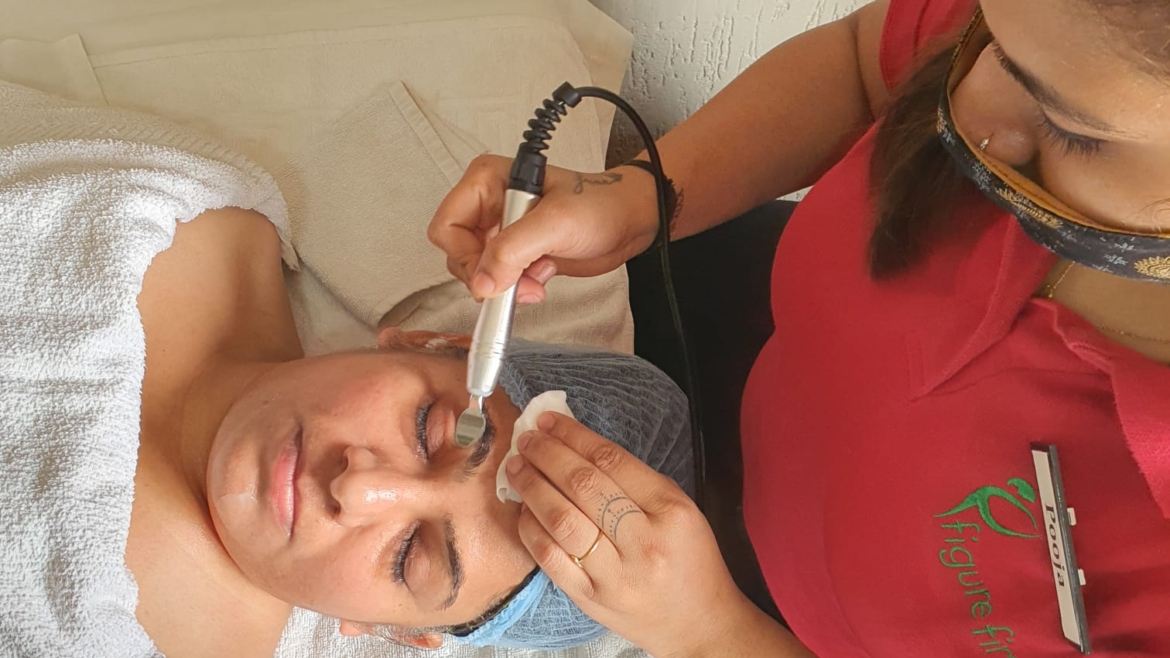By common definition, “Cellulite is lumpy unevenly distributed bulges of fatty tissue which often have a cottage cheese consistency. It is composed of gel-like lumps of water, fat and residues of toxic substances that should have been eliminated from the body.”
So in other words, cellulite is the way in which fat is arranged underneath the skin. Its lumpy appearance is due to fatty tissue trapped in spaces between connective tissues called Septa. The amount of cellulite an individual has is mostly due to genetic composition. Cellulite is extremely difficult to get rid of because it is caused by excess fat whose surrounding net-like fibers are very weak. This causes the fat to bulge in between the fibers and under the skins surface, making it a multi-faceted problem. It seems to plague women (rarely ever effecting men) of all shapes and sizes and usually resides in the hips, thighs and buttocks regions, and sometimes even the triceps and lower abdomen areas.
How Does Cellulite Develop?
Edematous-Fibrosclerotic Panniculopathy is a medical term used to describe cellulite. In the past decade, there has been extensive research to clarify the possible causes, and many authors agree on the following points:
(1) Adipose cells (fat cells) swell due to fat storage.
(2) Capillary walls become excessively permeable causing localized accumulation of fluid.
(3) Inadequate lymphatic drainage slows the removal of excess fluid.
(4) Adipose cells cluster and are bound by collagen fibers, which further impedes blood flow.
(5) Connective tissue strands stiffen, pulling down on their anchor points.
The changes in blood flow, lymphatic drainage, fat, and connective tissue result in cellulite – a bumpy or dimpled appearance of the skin
Theories for causes of Cellulite
Though diet and exercise do help to improve skin tone, many women are still affected by the appearance of dimpled, bumpy fat on the thighs and buttocks known as cellulite. Our bodies need fat (it’s an energy source and an insulator, surrounding and protecting the organs, and it helps us absorb vitamins A, D, E, and K), but too much can be a problem. In women, excess fat is stored in the buttocks, hips and thighs, where most cellulite forms.
“No one definitively knows what causes cellulite,” says Dr. Andrew Kornstein, a New York City plastic surgeon. “There are many theories and many causes, probably working in combination.”
So why do women get cellulite? “Women tend to accumulate fat in their waist, hips and thighs,” says Dr. Katie Rodan, assistant professor of clinical dermatology at Stanford University in California. “That is genetic. In women, these areas of the body are resistant to starvation. The evolutionary reason is that it helps us nurse our children.”
Surprisingly, new research indicates that cellulite may have more to do with the male hormone androgen than with the female hormones. “Cellulite is driven by being female, but there is no evidence that changes in hormones associated with pregnancy, breastfeeding, birth-control pills or menopause directly affect it,” says Dr. David MeDaniel, director of the Laser Center of Virginia in Virginia Beach. “Interestingly, women with high levels of androgen often do not have cellulite” , according to obesity researcher Dr. Michael Rosenbaum, associate professor of clinical pediatrics and clinical medicine at New York’s Columbia Presbyterian Hospital. In studies conducted by Dr. F. Nurnberg in the late seventies, men who had some cellulite also had low levels of the male hormone.
It is now believed that enlarged, bulging fat cells play a role, as does poor circulation of fluids in the area. Skin type is also suspect : Loose or thin skin may reveal cellulite more easily. In addition, poorly hydrated skin from low water intake can look doughy, exacerbating the appearance of cellulite.
Another culprit: The fibrous bands between the pockets of fat in cellulite areas. As the skin sags and bulges with excess fat, the inflexible bands pull on the skin and create dimples. “Women have underlying connective tissue in the thigh that predisposes them to show dimpling,” says Rosenbaum. “The fat sits in pockets that look like a honeycomb.” In men, the connective tissue forms a crisscross pattern and gives more support. “The connective tissues thicken with age,” says Rodan, making cellulite more difficult to get rid of the older you get.
Treatment of cellulite
There are many treatments available for the treatment of cellulite but the only USA FDA approved method for reduction of cellulite is a technique called Endermologie on which principles The Slimming Centre gives a guarantee. We help you soften up and smoothen up your roughened dimpled looking skin. Remember the best way to reduce cellulite is to fight it with a combination of a healthy diet, exercise, and our therapy. We have all the best cellulite tips to kiss that cellulite on your rump goodbye!



